Soil Fill Applications
An illustration of real-world examples of the problem-solving merits of Norlite Geotechnical Fill.
Earth Retaining Structures:
Problem 1: Low Safety Factor against Deep-Seated Failure
Problem 2: Increased Lateral Loads and Overturning Moments
Problem 3: Potential Settlements of MSE Wall Structure
Problem 4: Potential Settlements and Overturning Loads on Sheet Piling
Soft Ground Improvements:
Problem 1: Excessive Differential Settlements
Problem 2: Potential Settlements, Pipe Damage
Problem 3: Potential Settlement Under Roadways
Slope Stability:
Problem 1: Excessive Slope Movement
Earth Retaining Structures
Problem 1: Low Safety Factor against Deep-Seated Failure
Design of the Capital Center Project in Providence, Rhode Island included a pile-supported 35' high cantilever retaining wall adjacent to the Providence River. The weight of the proposed structure, including the backfill soil, would significantly increase loads on the underlying soft silt. The designers wanted to avoid triggering a deep-seated failure of an old bulkhead along the river bank.
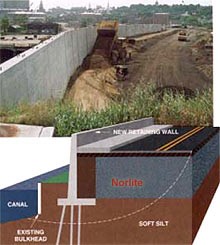
Solution
Engineers specified over 10,000 cubic yards of Norlite Lightweight Aggregate for placement behind the cantilever wall. Because of its light weight, Norlite reduced the loads on the foundation soils and behind the retaining wall, and increased the safety factor against deep-seated failure to acceptable levels.
In another application, 5,500 cubic yards of Norlite maintained stability of an existing bulkhead along Long Wharf in Boston.
Problem 2: Increased Lateral Loads and Overturning Moments
MBTA's renovations to a railway bed in Natick, Massachusetts required increasing the bridge clearance. This would involve raising both abutments and adjacent elevation. The increased lateral loads and overturning moments could have damaged the bridge's old masonry abutments.
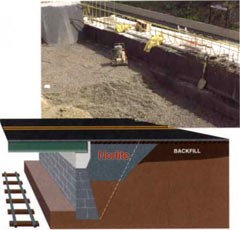
Solution
Norlite Lightweight Aggregate was used to both raise the adjoining area to the desired elevation and to replace some of the heavier existing backfill. Because Norlite aggregate is lighter than natural soils, it maintained the same lateral loads and overturning moments behind the abutments.
Problem 3: Potential Settlements of MSE Wall Structure
Design of multiple interstate highway interchanges along a waterfront area in New Haven, Connecticut called for a unique solution that wouldn’t cause settlement of the structures. The use of Mechanically Stabilized Earth (MSE) walls allowed roadway elevations to be raised to meet bridge decks on the interchanges with a minimal footprint. These structures were in a waterfront area with soft soils.
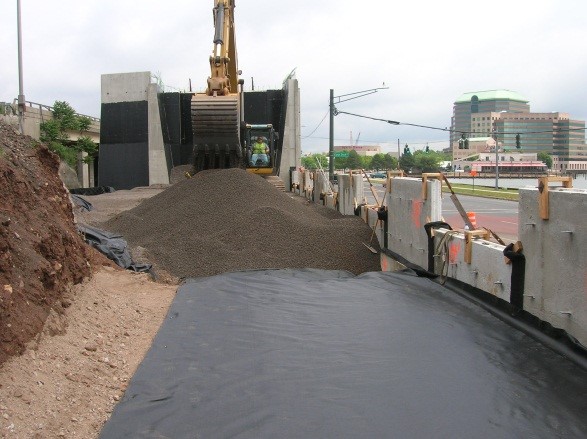
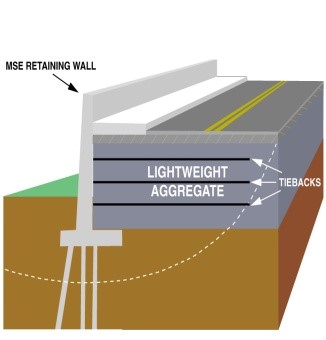
Solution
Engineers specified approximately 100,000 cubic yards of Norlite Lightweight Aggregate for placement behind the MSE walls. Because of its light weight, approximately half the weight of traditional fills, Norlite reduced the loads on the foundation soils. Because of Norlite’s high angle of internal friction, horizontal loads on the MSE walls were reduced.
Problem 4: Potential Settlements and Overturning Loads on Sheet Piling
The Port of Albany needed to increase its unusable river frontage and increase the depth at its docking area to allow larger vessels with greater drafts to use the facility. The reclaimed industrial site would be developed to support regional businesses and allow international shipments into this area of Upstate New York.
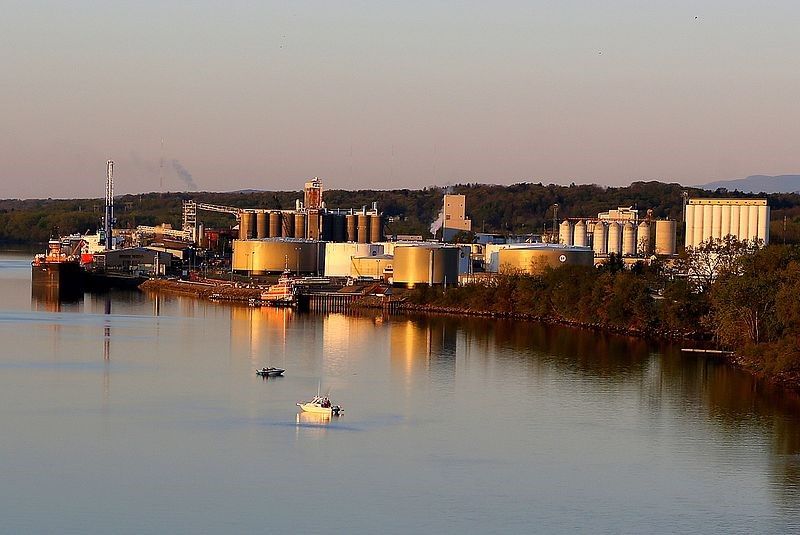
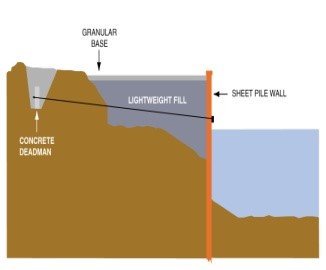
Solution
Design of the solution included the use of steel sheetpile backfilled with approximately 27,000 cubic yards of compacted lightweight aggregate. The use of the lightweight aggregate in the design resulted in an overall savings by reducing the size of sheet piling and lowering costs associated with the anchor system.
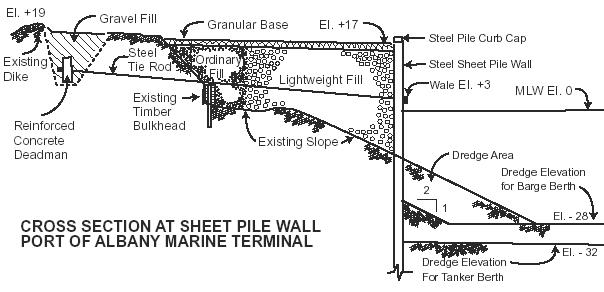
Soft Ground Improvements
Problem 1: Excessive Differential Settlements
The underlying soils at the Vermont Cheese Factory warehouse in Hinesburg, Vermont consisted of soft clay and peat. Engineers wanted to avoid structurally damaging differential settlements between the existing warehouse and a proposed new addition.
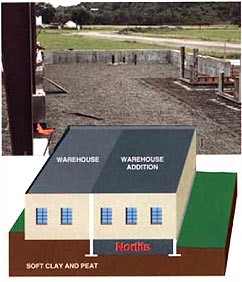
Solution
Several feet of existing soft soils were replaced with Norlite Lightweight Aggregate. Because the aggregate weighs only half as much as the existing soil, Norlite reduced the total foundation load of the new structure and kept differential settlements well within tolerable limits.
Engineers have used Norlite in soil replacement techniques for many years on a variety of structures, including the Massachusetts Institute of Technology Arts and Media Facility
Problem 2: Potential Settlements, Pipe Damage
A 12" utility line in the town of New London, Connecticut had to be placed across a swampy, two acre site. Settlement in the soft organic soils induced by the trench backfill could damage the pipe.
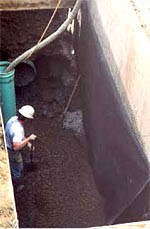
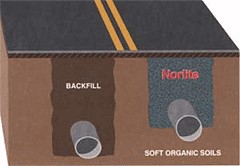

Solution
Norlite Lightweight Aggregate was used to solve several problems. The aggregate limited the amount of ground settlement to levels that the utility line could safely tolerate and its light weight reduced loads on the pipe. In addition, the aggregate's thermal insulating properties provided protection from freezing.
Problem 3: Potential Settlements of Roadway Subgrade
The underlying soils on many roadways can consist of soft clay and peat. Engineers wanted to avoid settlement of the roadways and maintain their structural integrity.
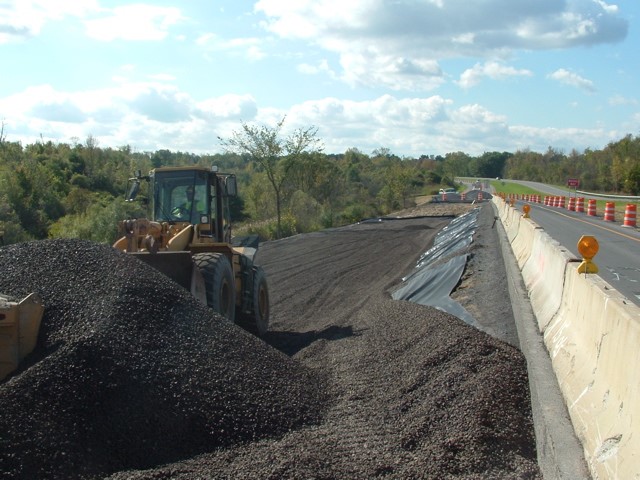
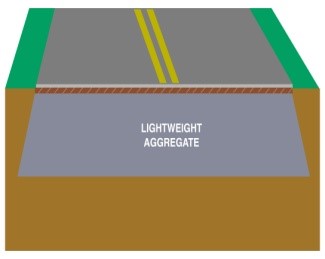
Solution
In numerous locations through North America, design of pavements resting on soft soils has been facilitated by “load compensation” replacement of heavy soils with a free draining structural lightweight aggregate with low density and high stability. Replacing existing heavy soil with lightweight aggregate permits raising elevations to necessary levels without providing any further surcharge loads to the lower level soils.
Slope Stability
Problem 1: Excessive Slope Movement
Slope failures, or landslides, typically occur where a slope is too steep, where fill material is not compacted, or where cuts in natural soils encounter groundwater or zones of weak material. These failures can cause movement in the supporting base material, damaging pavement, and potentially closing the roadway.
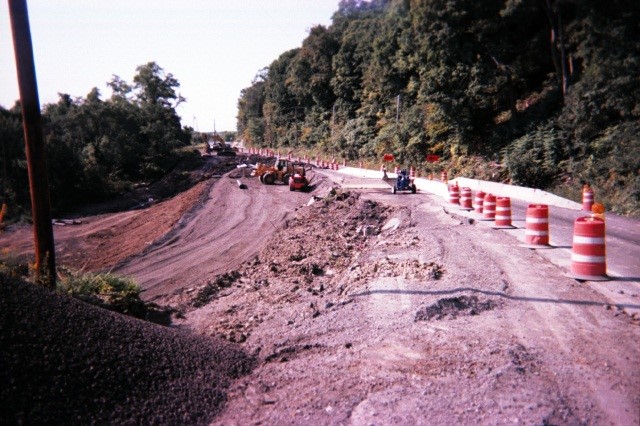
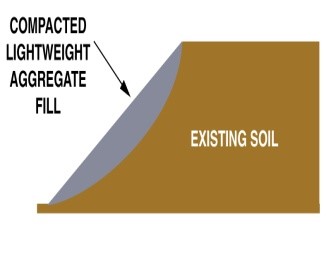
Solution
Norlite lightweight aggregate has been used to reduce the weight and strength of embankment fills. Because the aggregate weighs only half as much as the existing soil, Norlite reduces the weight of the fill material. The high angle of internal friction (42° to 55° depending on fill conditions) will increase the strength and stability of the slope allowing the base structure to support the roadway without excessive movement.
